-
 Bitcoin
Bitcoin $114800
-3.31% -
 Ethereum
Ethereum $3641
-5.84% -
 XRP
XRP $2.948
-6.36% -
 Tether USDt
Tether USDt $0.9998
-0.03% -
 BNB
BNB $772.4
-3.97% -
 Solana
Solana $169.1
-6.68% -
 USDC
USDC $0.9999
-0.01% -
 Dogecoin
Dogecoin $0.2056
-8.09% -
 TRON
TRON $0.3247
-0.18% -
 Cardano
Cardano $0.7239
-7.43% -
 Hyperliquid
Hyperliquid $39.71
-8.60% -
 Stellar
Stellar $0.3912
-7.84% -
 Sui
Sui $3.510
-10.17% -
 Chainlink
Chainlink $16.59
-8.03% -
 Bitcoin Cash
Bitcoin Cash $560.5
-3.65% -
 Hedera
Hedera $0.2464
-10.08% -
 Avalanche
Avalanche $22.03
-7.87% -
 Ethena USDe
Ethena USDe $1.001
-0.02% -
 UNUS SED LEO
UNUS SED LEO $8.947
0.21% -
 Toncoin
Toncoin $3.389
-2.58% -
 Litecoin
Litecoin $104.9
-5.23% -
 Shiba Inu
Shiba Inu $0.00001220
-6.67% -
 Polkadot
Polkadot $3.652
-6.10% -
 Uniswap
Uniswap $9.213
-9.05% -
 Monero
Monero $307.2
-2.93% -
 Dai
Dai $0.9998
-0.02% -
 Bitget Token
Bitget Token $4.367
-2.89% -
 Cronos
Cronos $0.1374
-6.80% -
 Pepe
Pepe $0.00001056
-8.65% -
 Aave
Aave $257.3
-7.31%
In which market conditions does Parabolic SAR work best?
The Parabolic SAR is a trend-following indicator that helps traders identify potential reversals, performing best in strong trending markets like Bitcoin's sustained rallies.
Aug 01, 2025 at 12:32 am
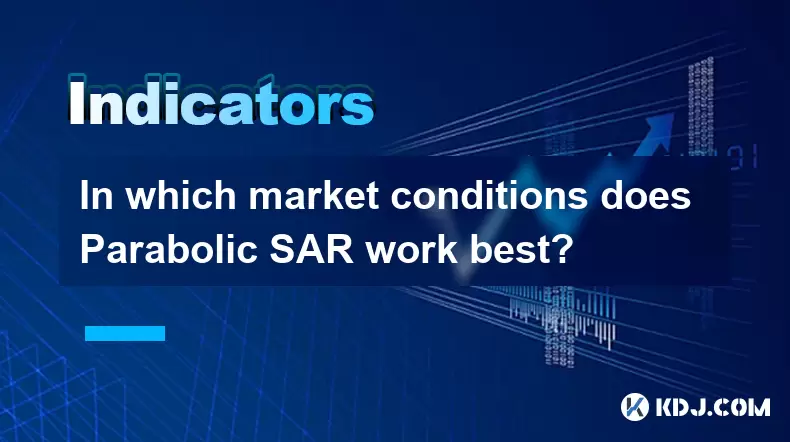
Understanding the Parabolic SAR Indicator
The Parabolic SAR (Stop and Reverse) is a technical analysis tool developed by J. Welles Wilder Jr. to identify potential price reversals in financial markets. It appears as a series of dots placed either above or below the price chart. When the dots are below the price, it signals an uptrend, and when they are above, it indicates a downtrend. This indicator is particularly useful for traders seeking to determine entry and exit points based on trend momentum.
The formula for Parabolic SAR involves an acceleration factor and an extreme point, which adjusts as the trend progresses. The calculation dynamically moves the SAR closer to the price as the trend continues, making it sensitive to price changes. The key components include the initial SAR value, the acceleration factor (AF), which typically starts at 0.02 and increases by 0.02 each time a new extreme point is reached, and the maximum acceleration factor, usually capped at 0.20.
Traders rely on the visual placement of the dots to make decisions. A dot flipping from above to below the price is considered a bullish signal, suggesting it may be time to enter a long position. Conversely, a flip from below to above is a bearish signal, indicating a potential short opportunity or exit from a long trade.
Optimal Market Conditions: Strong Trends
The Parabolic SAR performs most effectively in markets exhibiting strong, sustained trends. In an environment where prices move consistently in one direction—either upward or downward—the indicator remains on one side of the price, providing reliable signals. During such periods, the SAR dots trail the price at an increasing rate due to the rising acceleration factor, helping traders ride the trend while minimizing premature exits.
For instance, in a bullish crypto market where Bitcoin steadily climbs over several days with minimal pullbacks, the SAR dots stay beneath the candles. Each new high extends the extreme point, increasing the acceleration and tightening the stop-loss equivalent. This behavior allows traders to capture a significant portion of the upward movement.
Similarly, in a bearish trend, such as a prolonged decline in Ethereum following negative regulatory news, the SAR remains above the price, signaling continued selling pressure. The dynamic adjustment ensures that the stop level moves downward with the price, protecting profits in short positions.
Markets like cryptocurrency, which are prone to extended momentum moves due to speculative trading, often provide ideal conditions for Parabolic SAR. However, its reliability diminishes when the trend lacks consistency or when volatility causes erratic price swings.
Ineffective Performance in Sideways or Choppy Markets
One of the primary limitations of the Parabolic SAR is its tendency to generate false signals during ranging or sideways markets. When prices oscillate within a horizontal channel without a clear direction, the SAR dots frequently flip from above to below and vice versa, creating a series of misleading entry and exit cues.
For example, in a consolidation phase where Solana trades between $90 and $100 for several days, the SAR may switch positions multiple times. Each flip suggests a reversal, but none materialize into a sustained move. This results in whipsaws, where traders enter positions only to be stopped out repeatedly, incurring losses from transaction fees and poor timing.
To mitigate this, traders often combine the Parabolic SAR with other tools such as ADX (Average Directional Index) to confirm trend strength. An ADX reading above 25 typically indicates a strong trend, making SAR signals more trustworthy. Below this threshold, the market is likely range-bound, and SAR-based trades should be approached with caution.
Another strategy involves using moving averages to filter signals. If the price is above a 50-period EMA, only long signals from SAR are considered valid. This adds a layer of confirmation and reduces noise in sideways conditions.
Using Parabolic SAR in Crypto Trading: Practical Steps
To apply the Parabolic SAR effectively in cryptocurrency trading, follow these steps:
- Open a trading platform that supports the Parabolic SAR indicator, such as TradingView, Binance, or MetaTrader.
- Navigate to the chart of the desired cryptocurrency (e.g., Bitcoin, Cardano).
- Click on the “Indicators” button and search for “Parabolic SAR.”
- Adjust the settings: set the step (acceleration factor) to 0.02 and the maximum to 0.20, which are the default and most widely used values.
- Observe the placement of the dots relative to the price candles.
- Enter a long position when the first dot appears below the price after a downtrend.
- Enter a short position when the first dot appears above the price after an uptrend.
- Use the SAR dots as a trailing stop-loss by exiting the trade when the price crosses the dot.
It is crucial to backtest this strategy on historical data. For example, apply the SAR to a 4-hour chart of Binance Coin over the past six months and manually simulate trades based on dot flips. Record the outcomes to assess win rate and risk-reward ratio before deploying real capital.
Combining Parabolic SAR with Volume Analysis
Volume plays a critical role in validating Parabolic SAR signals, especially in the cryptocurrency market where low liquidity can distort price action. A SAR reversal accompanied by a spike in trading volume increases the likelihood that the signal is genuine.
For instance, if the SAR dot moves below the price on a Bitcoin daily chart and the same candle shows volume 50% higher than the 20-day average, it suggests strong buying interest and a higher probability of an uptrend continuation. Conversely, a SAR flip with declining volume may indicate a weak reversal and should be treated skeptically.
Traders can use volume indicators like On-Balance Volume (OBV) or Volume Weighted Average Price (VWAP) to enhance confirmation. A rising OBV during a SAR-generated long signal supports bullish sentiment. Similarly, a break above VWAP on high volume strengthens the validity of the trend.
Timeframe Considerations for SAR Accuracy
The effectiveness of the Parabolic SAR varies significantly across different timeframes. Higher timeframes, such as daily or weekly charts, tend to produce more reliable signals because they filter out short-term noise and reflect broader market sentiment.
On a daily chart, a SAR reversal in Dogecoin may represent a meaningful shift in investor behavior, especially if supported by macroeconomic factors. In contrast, on a 5-minute chart, the same indicator may generate dozens of signals within hours, most of which are false due to market microstructure and high-frequency trading.
Therefore, swing traders and position traders benefit most from SAR on 4-hour and daily charts, while scalpers should avoid relying on it exclusively. Adjusting the SAR parameters (e.g., increasing the step value) can reduce sensitivity, but this may delay signal generation and reduce profitability.
Frequently Asked Questions
Can Parabolic SAR be used in volatile crypto markets?
Yes, but with caution. High volatility can cause rapid dot flips, leading to whipsaws. It is advisable to combine SAR with volatility filters like Bollinger Bands or ATR to assess whether price movements are sustainable.
What are the default settings for Parabolic SAR?
The standard settings are a step (acceleration factor) of 0.02 and a maximum of 0.20. These values are optimized for most trending markets and should be adjusted only after thorough testing.
Does Parabolic SAR work well with all cryptocurrencies?
It works best with high-market-cap cryptos like Bitcoin and Ethereum, which exhibit stronger trends. Low-cap altcoins with erratic price action are less suitable due to frequent reversals and low liquidity.
How can I reduce false signals from Parabolic SAR?
Use trend confirmation tools such as ADX, moving averages, or MACD. Only act on SAR signals that align with the broader trend direction identified by these indicators.
Disclaimer:info@kdj.com
The information provided is not trading advice. kdj.com does not assume any responsibility for any investments made based on the information provided in this article. Cryptocurrencies are highly volatile and it is highly recommended that you invest with caution after thorough research!
If you believe that the content used on this website infringes your copyright, please contact us immediately (info@kdj.com) and we will delete it promptly.
- Bitcoin, Ethereum, and Investor Behavior: A New York Minute on Crypto Trends
- 2025-08-01 15:10:12
- Tether's Q2 Triumph: USDT Supply Soars Amidst Profit Surge!
- 2025-08-01 15:10:12
- Ethereum ETF Holdings: A Corporate Treasury Revolution?
- 2025-08-01 15:30:12
- Ethereum's Wild Ride: Funding Rates, Price Drops, and Retail to the Rescue!
- 2025-08-01 15:30:12
- Ethereum Under Pressure: Crypto Market Drop Explained
- 2025-08-01 15:35:11
- Ethereum ETF Mania: Inflows Surge, Market Rises, What's Next?
- 2025-08-01 15:35:11
Related knowledge

What is the difference in KDJ signal interpretation between a trending and a ranging market?
Aug 01,2025 at 03:56pm
Understanding the KDJ Indicator in Cryptocurrency TradingThe KDJ indicator is a momentum oscillator widely used in cryptocurrency trading to identify ...

Does the KDJ indicator work well for low-liquidity crypto assets?
Aug 01,2025 at 02:01pm
Understanding the KDJ Indicator in Cryptocurrency TradingThe KDJ indicator is a momentum oscillator derived from the Stochastic Oscillator, widely use...
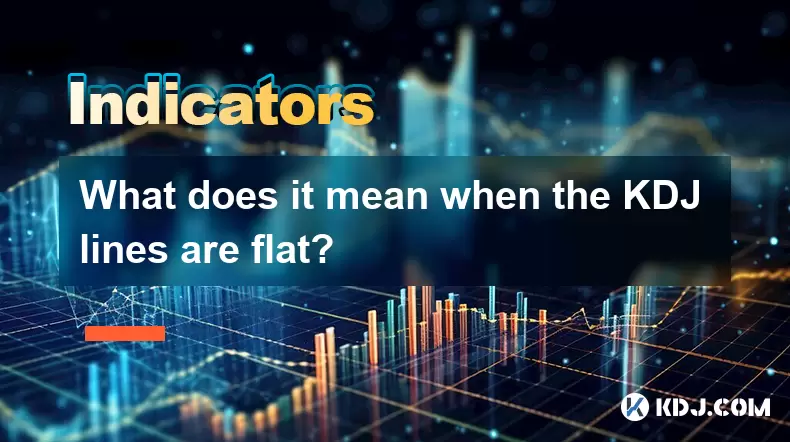
What does it mean when the KDJ lines are flat?
Aug 01,2025 at 03:22pm
Understanding the KDJ Indicator in Cryptocurrency TradingThe KDJ indicator is a momentum oscillator widely used in cryptocurrency technical analysis t...
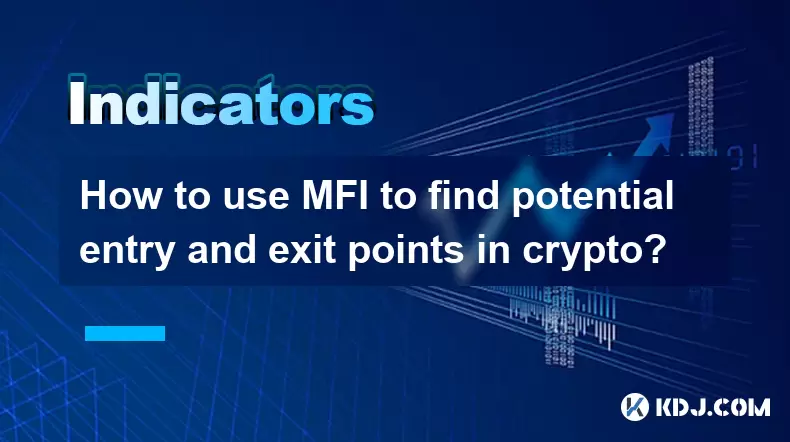
How to use MFI to find potential entry and exit points in crypto?
Aug 01,2025 at 02:35pm
Understanding the MFI Indicator in Cryptocurrency TradingThe Money Flow Index (MFI) is a momentum oscillator used to measure the strength and directio...
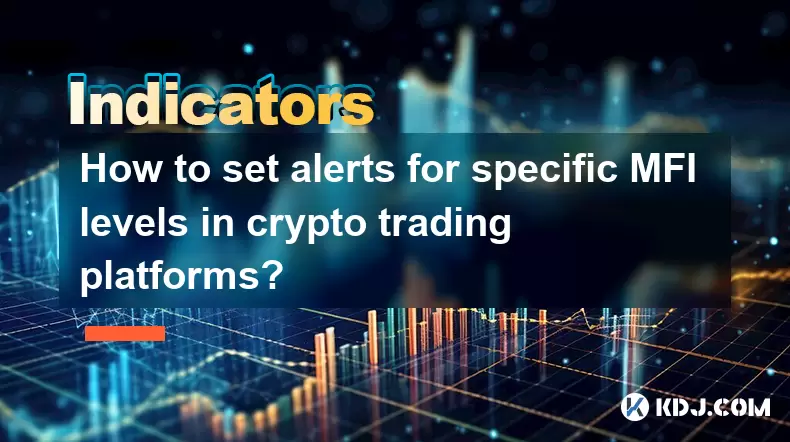
How to set alerts for specific MFI levels in crypto trading platforms?
Aug 01,2025 at 12:42pm
Understanding the Money Flow Index (MFI) in Crypto TradingThe Money Flow Index (MFI) is a momentum oscillator that measures the flow of money into and...
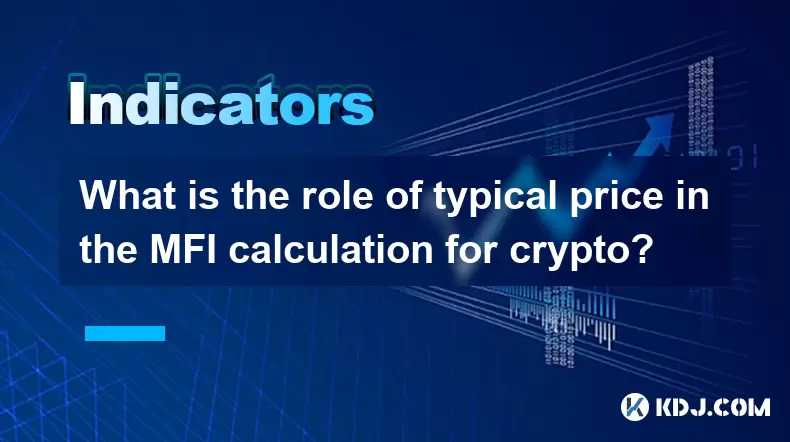
What is the role of typical price in the MFI calculation for crypto?
Aug 01,2025 at 12:21pm
Understanding the Typical Price in MFI for Cryptocurrency AnalysisThe Typical Price plays a crucial role in the calculation of the Money Flow Index (M...

What is the difference in KDJ signal interpretation between a trending and a ranging market?
Aug 01,2025 at 03:56pm
Understanding the KDJ Indicator in Cryptocurrency TradingThe KDJ indicator is a momentum oscillator widely used in cryptocurrency trading to identify ...

Does the KDJ indicator work well for low-liquidity crypto assets?
Aug 01,2025 at 02:01pm
Understanding the KDJ Indicator in Cryptocurrency TradingThe KDJ indicator is a momentum oscillator derived from the Stochastic Oscillator, widely use...

What does it mean when the KDJ lines are flat?
Aug 01,2025 at 03:22pm
Understanding the KDJ Indicator in Cryptocurrency TradingThe KDJ indicator is a momentum oscillator widely used in cryptocurrency technical analysis t...

How to use MFI to find potential entry and exit points in crypto?
Aug 01,2025 at 02:35pm
Understanding the MFI Indicator in Cryptocurrency TradingThe Money Flow Index (MFI) is a momentum oscillator used to measure the strength and directio...

How to set alerts for specific MFI levels in crypto trading platforms?
Aug 01,2025 at 12:42pm
Understanding the Money Flow Index (MFI) in Crypto TradingThe Money Flow Index (MFI) is a momentum oscillator that measures the flow of money into and...

What is the role of typical price in the MFI calculation for crypto?
Aug 01,2025 at 12:21pm
Understanding the Typical Price in MFI for Cryptocurrency AnalysisThe Typical Price plays a crucial role in the calculation of the Money Flow Index (M...
See all articles

























































































